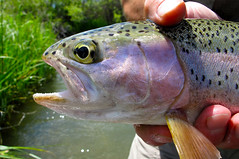Today Prof.
Dr. Belgin Hossu explains the trout industry in Turkey.
Read the full feature here or scroll down.
Rainbow
Trout and Feed sector in Turkey
by Prof.
Dr. Belgin Hossu
According
to the latest parametres from the Turkish Statistics Office, rainbow
trout production is around 85.244 tonnes in Turkey and is increasing
each day. Farms are mostly on land and damed lakes with a small
amount in sea cages.
Rainbow
trout production in Turkey can be divided in to two parts. The reason
for this is the continously changing cost of feed due to fishmeal and
fish oil prices. Unstable prices of fishmeal and fish oil has forced
the farms to produce their feed themselves. As a result, the feed
sector has to be seen as commercial feed mills and self-feed
producers. Feed production for rainbow trout is done totally in
Turkey. Foreign feed mills have built fish feed plants in Turkey
because of increasing demand by farms. Trout farms choose feed mills
according to their prices and payment ease.
| Rainbow Trout (Photo credit: CircumerroStock) |
Rainbow
trout have differences between them because of geographic conditions
of the country. Depending on these changing conditions, FCR is
between 0.84- 0.97. The main protein source of feed is fishmeal.
Fishmeal sources are foreign countries and sardine and anchovy from
Black Sea according to the fishing seasons. Protein rate of feed is
around 44 per cent at growing ages.
In addition to fishmeal,
vegetable protein sources have been used to decrease the cost of the
feed. These are soybean meal, corn meal and wheat meals. Adding of
caroteneids generally happens at salmon breeding or matured fish of
trout.
The
feed manufacturing system is extruder. To decrease waste, floating
feed is prefered.
Generally,
the colour of the meat isn’t important because trout is consumed
both fresh and frozen. On the other hand, yellow coloured meat isn't
preferable because it indictaes high levels of corn and soybean meal.



No comments:
Post a Comment